Meet an Educator is a monthly series by Early Bird, where we feature the work of educators across India who are actively spreading the joy of birds and nature. This month’s featured educator is Mihir Pathak, an educator and writer from Vadodara , Gujarat. He curates experiential learning journeys for children through interdisciplinary/geo-inquiry projects.
Do tell us about yourself, where you are from, and your work
Hello, this is Mihir, also known online as learningwala. I am an educator, writer, and Earth Educator Fellow based out of Vadodara, Gujarat. I am a school ‘walk-out’ and have been working with children across age groups and socio-economic backgrounds for the last 11 years. As an independent educator, I facilitate experiential learning journeys with children through interdisciplinary/geo-inquiry projects.
What excites you about the natural world?
The river is a big part of my childhood. I spent many holidays during my childhood at the Narmada ghat. I am very fascinated by how it is connected to common people, industries, and all life forms at different levels. I feel very sad when I see sand mining happening at the riverbank near my home. I get into a whirlpool of thoughts about who is doing it, why can’t we stop it and how we are a part of it. Is it because of our lifestyle or because of profit-making giants? Again, I recentre myself, watch the living river, and feel the slow passing of time.
This connection and fascination led me to participate in a three-day river festival in Hoshangabad with the Eklavya Foundation, where we explored river walks, sand mining, art, literature, science, social science, music, and biodiversity around the river. We recently conducted a geo-inquiry project on the Vishwamitri river in Gujarat with children from Vadodara. We did river walks to explore life around the Vishwamitri river, to understand why this river is getting polluted, who is polluting it, and at what cost.
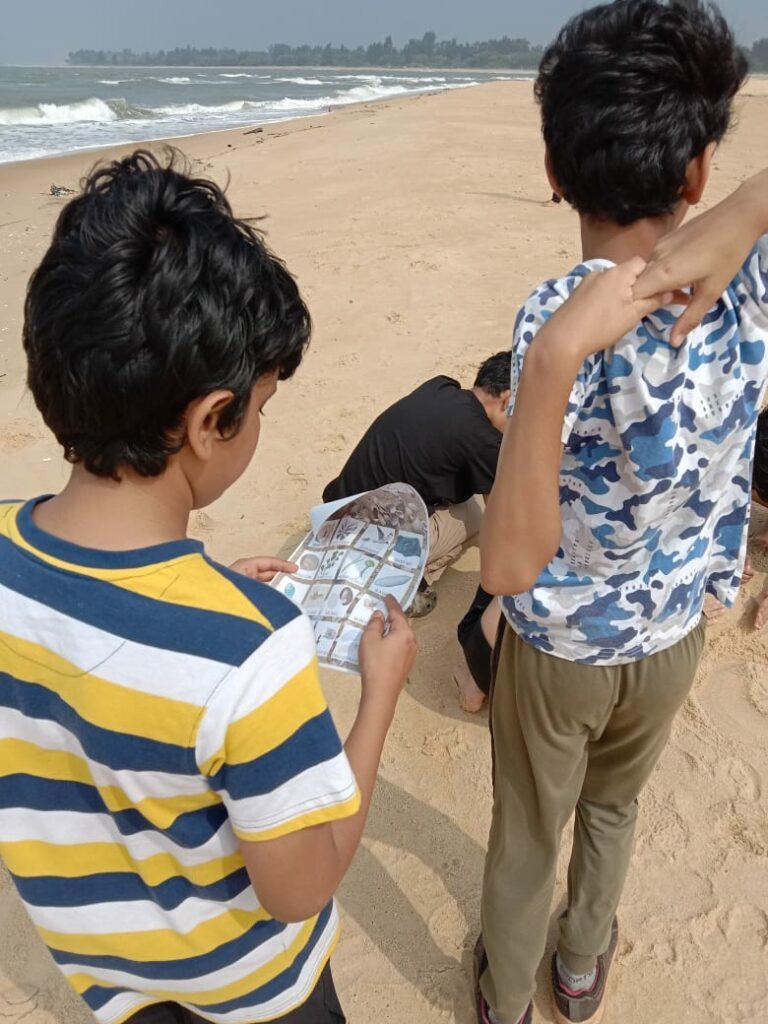
When and how did you get interested in bird/nature education?
I have been using different experiential tools, such as theatre, inquiry-based projects, and nature-based activities, to facilitate learning journeys with children for many years. Around 2017, I was co-facilitating the ‘Ecobuddy Club’ in a school located in Bhuj, Gujarat. The experience gave me much insight into the potential of nature education.
After learning about nature education, I found the framework and umbrella term for the work I am doing with children. My birding journey started three years ago when my dear friends Srishti and Suchakra gifted me a pair of binoculars. The love affair with birding is still alive and thriving.
The fellowship I completed in 2022-23, called the ‘Earth Educator Fellowship’ by YouCAN, introduced me to a whole new world of nature educators. The fellowship gave me the confidence that I am not alone in this journey. It also provided me with tools and insights to find my place in the whole spectrum of nature/environment education. I have chosen to do interdisciplinary projects with children, which also involve connection-building tools like nature walks, bird watching, nature journaling, and more.
What do you hope to achieve through your education work?
I believe transformation happens through relationships—the relationship between a child and a teacher. There should be no fear, no authority, no restriction on asking questions; there should be genuine friendship, opportunity for co-creation/agency, and more. This will ultimately foster personal growth, academic growth, and the development of human & ecological values.
There is no space in traditional classroom methods to do this. But I believe that nature education is one of the platforms where you can create this type of learning environment, where children can co-create, ask questions, collaborate, think critically, empathize, and understand interconnectedness.
The following have been my guiding circles:
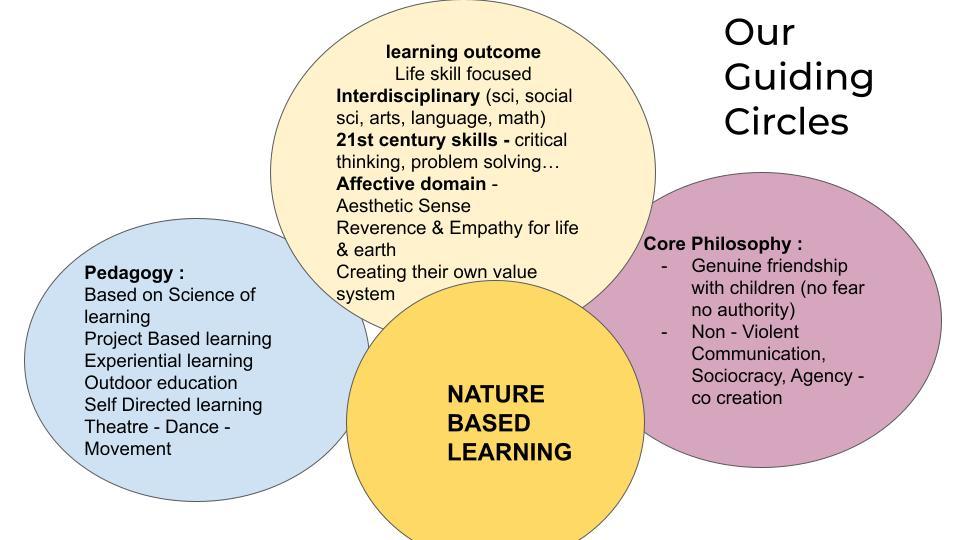
Why do you believe it is important for children to learn about birds or connect with nature?
I strongly believe that the direct experience of your local nature will give you the opportunity to slow down, observe, think critically about your actions, ask questions to know more, feel wonder, joy, and motivation to take action. Connecting with nature in an experiential way gives you a different lens through which to see the world.
Let’s take ‘trees’; our textbooks often present them merely as ‘resources’. Textbooks will only tell you that they provide fruit, shade, and wood. But when you experience a tree, you can see that it is a living ecosystem. There are multiple ways to perceive a tree: socially, ecologically, through language, art, history, child development, and more.
I believe that connecting with nature will change our perspective from human/ego-centric to eco-centric, where all life forms are included. I strongly feel that our children should connect with nature to combat capitalism, monoculture, the attention economy, and profit giants who view nature solely as resources.
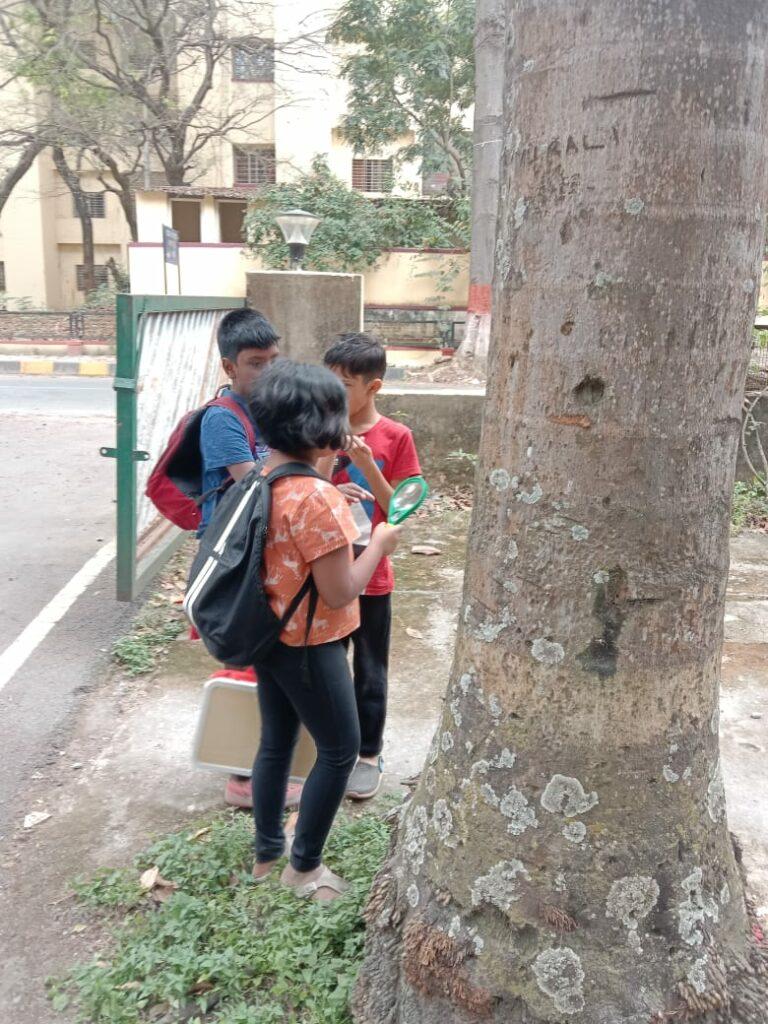
What tools or resources have helped you in teaching about birds? Can you describe an approach that has worked exceptionally well for you?
I am a big believer in Project-Based Learning methodology. I have been conducting eco-centric projects with children for many years, starting with filmmaking, publishing a local nature-based magazine, creating MIT Scratch-based games on climate change, collecting used pencil cells and writing letters to manufacturing companies to suggest recycling centres for responsible disposal.
Recently, I joined an online program called ‘Young Climate Authors’. The idea, of course, is to facilitate children in writing stories, poems, and illustrations based on their lived experiences of local nature and the effects of climate change. This is once again a project-based approach where we facilitate visits to different places, nature walks, meetings with various people, and help children choose their story/poem, and embark on the journey of producing a whole book. I am going to implement this method with my children in our upcoming engagement.
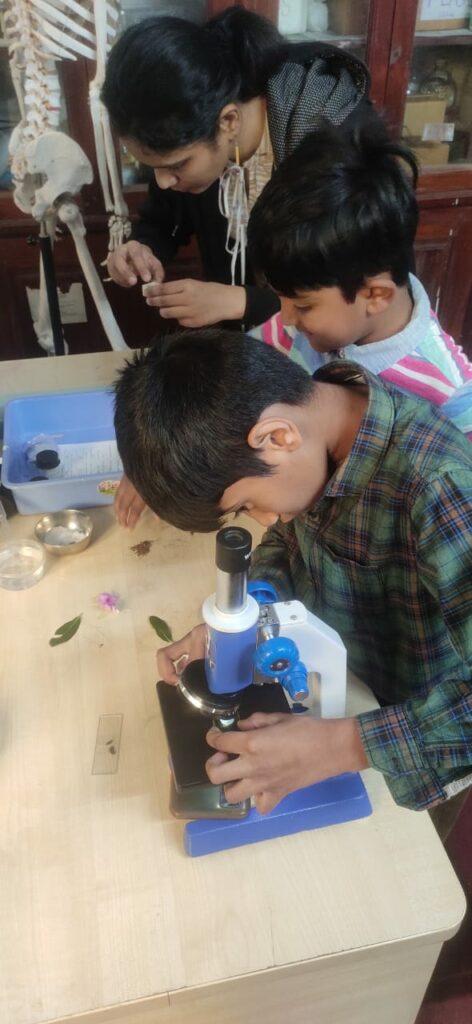
I love using theatre and movement as tools for nature education. Recently, my partner Nidhi and I facilitated an interesting session with our dear friends, Chetna & John. First, we went on a bird-watching trip to Saul Kere Lake in Bengaluru, did some nature journaling/bird drawing activities, and then played some movement games. We asked children to enact any bird they saw/observed in the lake, and other children would guess which bird they were enacting. It was a fun activity, and the children enjoyed it a lot. They will observe more on their next bird-watching trip.
In addition to this, I use the ‘Climate, Biodiversity, and People’s Curriculum‘, Nature Bingo by Palluyir Trust, different pocket guides and activities developed by NatureClassrooms, SeasonWatch, Early Bird, and activity booklets created by Wipro Earthian. Furthermore, I connect and take inspiration from friends – Chetna and John (Spiders & Sea), Siddharth (Veditum) for river walks, and Vikram (Life Meets Lens), City as Lab for project-based learning.
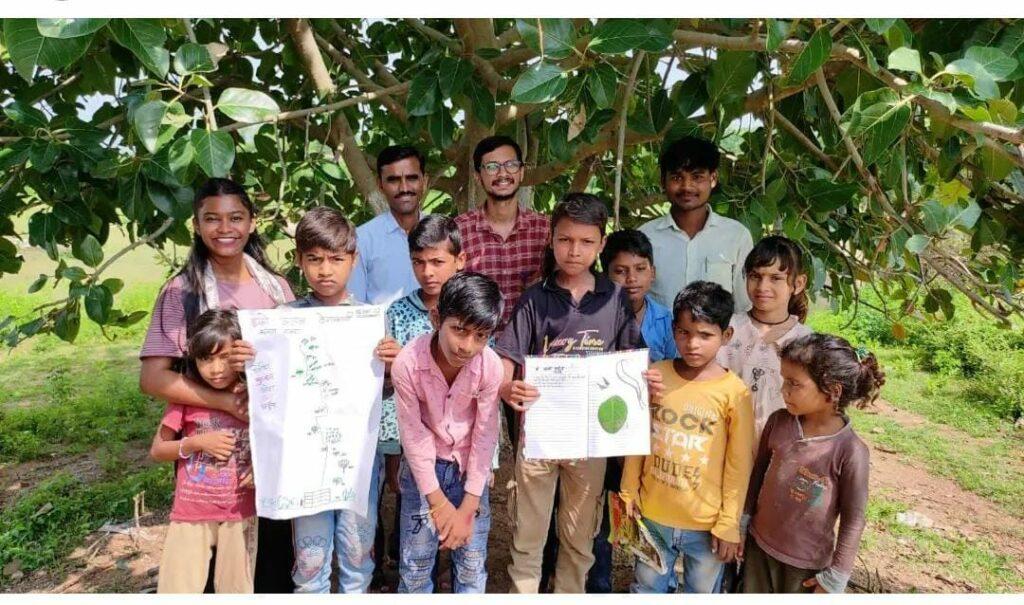
Have you encountered a significant challenge as a bird/nature educator, how did you overcome it?
The biggest challenge is to get space in the traditional school system to engage with children for a longer time. I am able to do short sessions, but if you want to do long in-depth projects, you need time with children. The second challenge that is similar to the previous one, is to explain to school principals or teachers (even my parents) about what nature education is and why it is important.
To overcome these challenges, I am partnering with local NGOs to engage with children for a longer time. Apart from that, I am translating and creating more content about nature-based pedagogy in local languages like Hindi, Gujarati, and Marathi. This helps to spread awareness among parents and teachers.
Do share any memorable moment or experience you have had in teaching kids about birds/nature. Can you recall any insightful instance that shaped your perspective?
There have been many instances and they have all shaped my perspective about the power of nature education. I remember one nature-immersive camp with children from Sidsar village in Gujarat. Girls who never spoke in class started asking questions during birdwatching and nature walks.
During a six-month long project with children, we did nature journaling, birdwatching, and cloud-spotting activities. The culmination of that project was an exhibition called ‘A Matter of Time – exploration of time beyond clock and money’. I see children are more curious about their surroundings now; they send pictures of clouds they spot. When they go for a family trip, they spot birds and send pictures to me. One child took time and observed moss in her garden.
I also co-facilitated a project called ‘Voice of Vishwamitri’ with children from Vadodara. It was an immersive experience of river walk, taking interviews, observing biodiversity, and more. During this project, one child asked the question, “who owns the river?” Such powerful questions and motivation to do something for the river make my eyes wet.
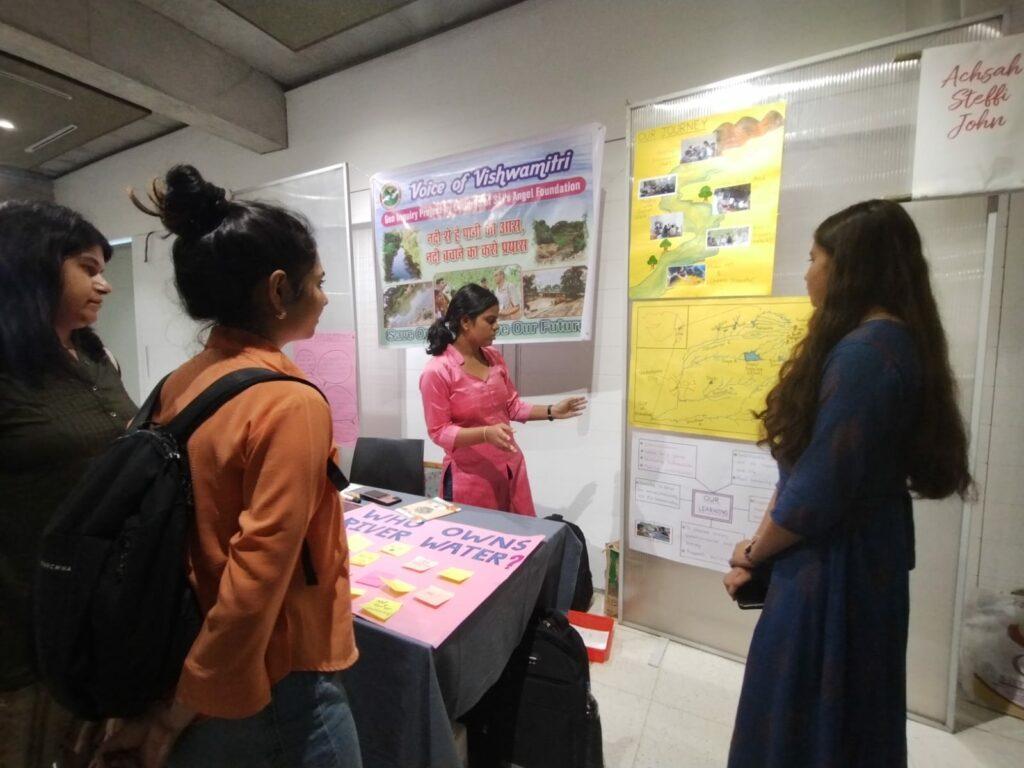
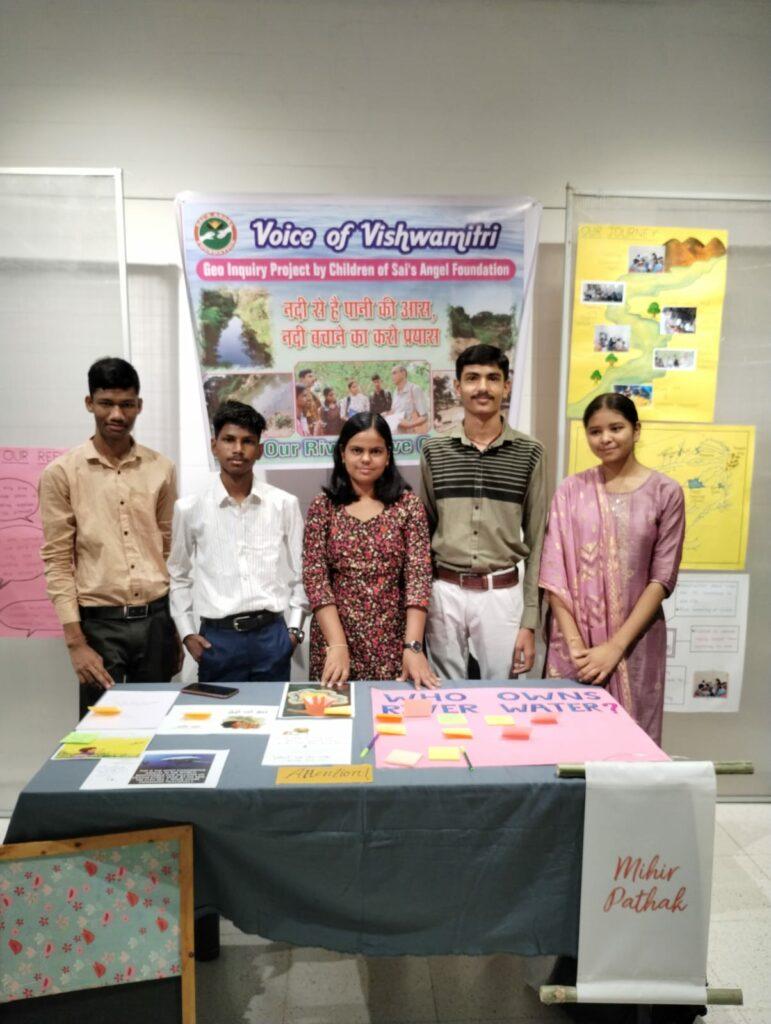
Children from the EcoBuddy Club in a school in Bhuj, Gujarat decided to find an alternative to plastic pens used for writing. They collected big boxes of used pens and made artifacts out of them. We did cleanup drives around the lake and collected bags of plastic; the energy and intrinsic motivation from children gives me goosebumps.
In our eco clubs in Bhuj, one day we saw Greta Thunberg’s video and immediately decided to do a ‘Fridays for Future’ event in our own town. Children from grades 6th to 8th made great efforts and joined in for the event, where we did plays and a public showing of Greta’s video, engaging with over 100 people. I couldn’t imagine doing this with adult friends (as it takes a lot of effort to convince them), but at that time, I felt children came together as a great team.
Have you noticed any changes in your learners after they received exposure to birds and nature-based learning? If yes, what are they? If not, why do you think that is?
I have observed that children are more aware of their surroundings; they are curious about it – it can be a bird, fungi, moss, ant, tree, dragonfly, just anything. I’ve heard children saying, “I visited this place so many times, but after the nature walk, now I can see so many things which I never saw before.” I have observed these changes after short term engagement. I am planning to document changes or learning outcomes in children after long term engagement with them. It will be good research to validate the effects of nature education.
Here is a reflection from a 13-year-old child, after one of our birdwatching trip:
At first, I thought we would see the same birds seen last time, but when we decided to take a full round, I was curious to try and spot new ones. Once we started spotting new ones, I was really happy and excited; one patch with the trees looked really nice. Seeing the beautiful colors of the birds gives me peace when looking at them.
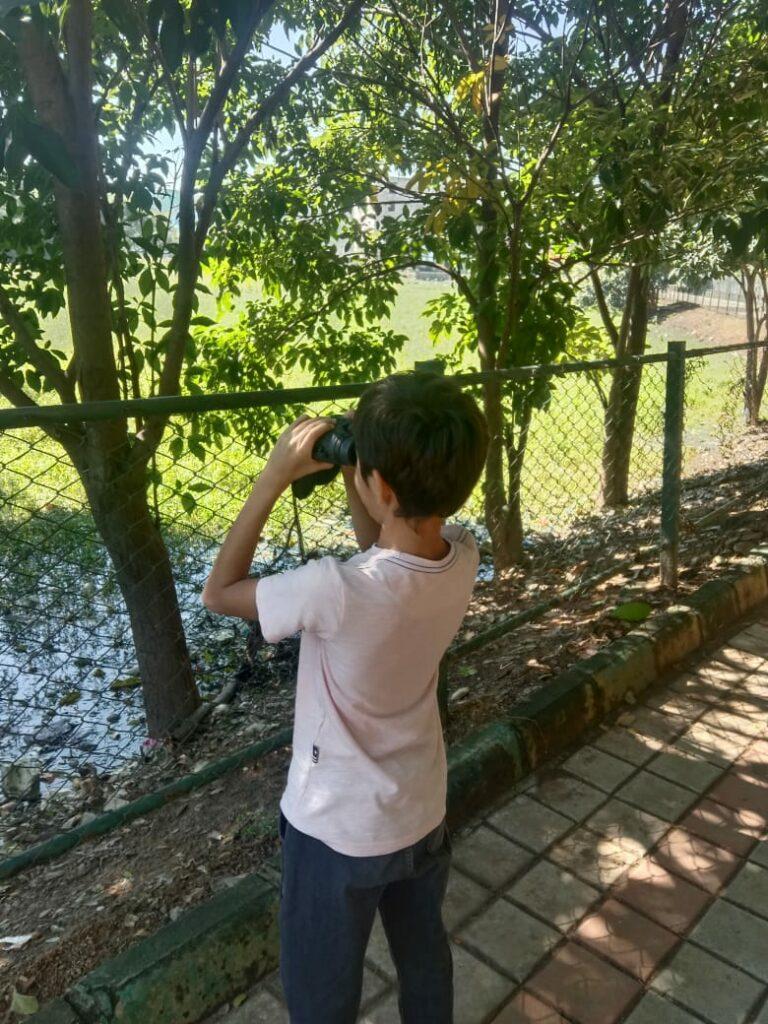
During the process of birdwatching, I like that I don’t know what time it is and I’m fully submerged into the process of looking for birds and enjoying the view. I like waking up early and going for birdwatching because the day starts with something I like, and the whole day continues well.
The excitement when I spot a new bird feels good, and also the patience while spotting a bird feels nice because I’m calm at that time. Some birds appear to be still/meditating, which is nice because we can look at them nicely, and I also get the thought we should be inspired by them and also practice being calm/still for some time.
When we look at a bird, I feel good when I am able to identify the names. During birdwatching, it feels like time is going at my pace. Next time: Now I want to try and observe the same birds for some time and see what they do. Also, go on a daily basis and see if we spot the same ones every day and at the same spot.
What message would you have for your fellow educators, or somebody starting out in their nature education journey?
First of all, I want to congratulate them for choosing this work. We need people to do this type of work more than ever. There are challenges—financially, you might struggle; you might face difficulties explaining your work. But my request is, please be there, keep working, find or build community, collaborate with people and organizations who are already working in this field.
From a facilitation point of view, learning starts from creating relationships and genuine friendship with children. Start with what your children already know and are interested in. Use materials and methods already created and used by so many educators and organizations, and create your unique pedagogy and local nature-based material. You can also use some pointers from this document prepared by Yuvan Aves on some ways for teachers to begin integrating nature-based learning values and practices into their classes.
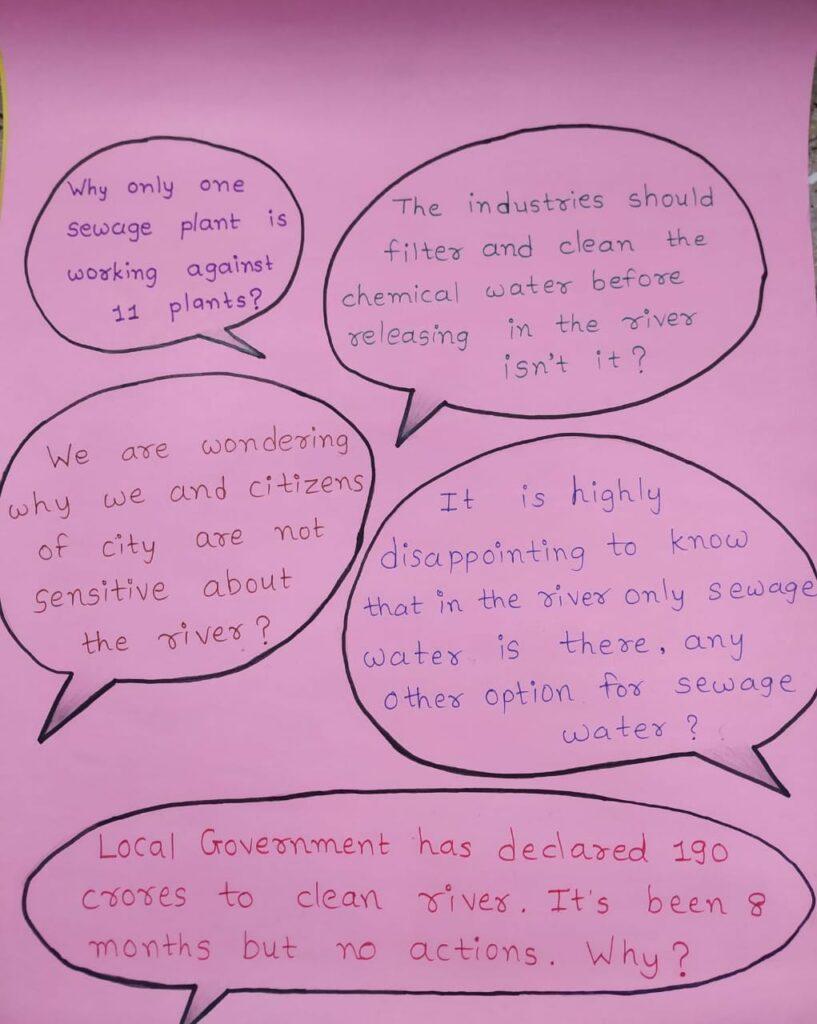
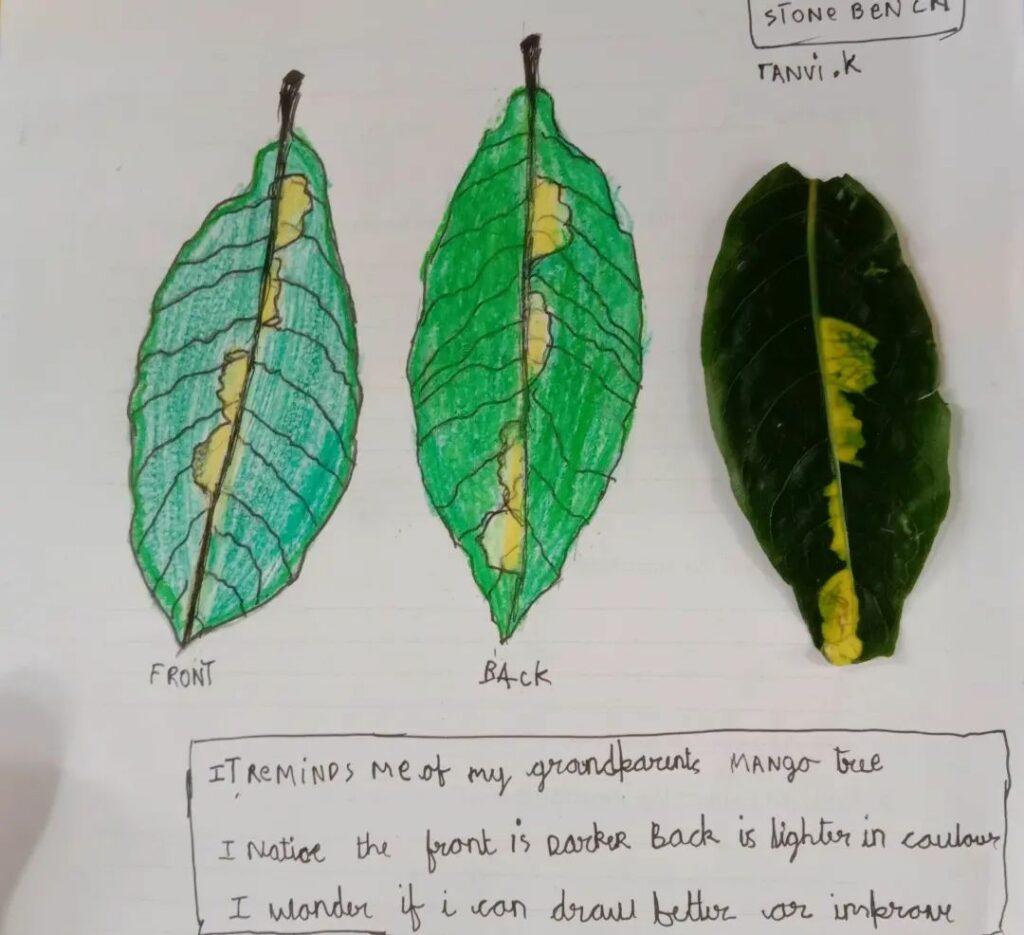
If you are doing something around Geo Inquiry, interdisciplinary projects, theatre and art forms in nature education, or anything around rivers, please reach out to me, and I would love to collaborate and help in whatever way I can.
All photos in this blog post are credited to Mihir Pathak.

